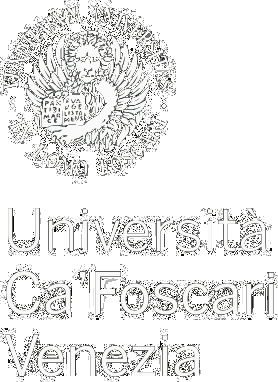
- search 758 views
- file_download 483 download
- keyboard_capslockmetadata
-
mark_email_readIscriviti alla newsletter
Space Oddity: Exercises in Art and Philosophy
a cura di
abstract
The volume includes papers presented at the 4th Postgraduate International Conference of the Department of Philosophy and Cultural Heritage of Ca’ Foscari University of Venice (Venice, 5-7 October 2022). Our understanding of reality is filtered through myriad media, and we have the ability – and power – to gather, ignore, tweak, and explore the information needed to define what we mean by ‘reality’. The concept of ‘space’ – in its broadest sense – plays an essential role in an individual’s explanation of reality, and we must deal with a plurality of models and concepts of it. As elaborated in the text Space and Time in Art, the Russian theologian, philosopher, and art theorist Pavel Florensky states: “all culture can be interpreted as the activity of organising space”. Starting from this culturological reading, Florensky identifies three spatial “dimensions” and three corresponding genres of activity: (1) The space of our strong relations and the activity of ‘Technique’; (2) The mental space and its organisation and the activities of ‘Science’ or ‘Philosophy’; (3) The space between the previous two, and the activity of ‘Art’. Ultimately, all have the same aim: to change reality to reconstruct space. According to leading scholars and critics, the late 1980s saw a “spatial turn” take place in literary, social, and cultural studies. In 1991 Fredric Jameson theorised a shift from the paradigm of time to the paradigm of space, from modernism to postmodernism. The pandemic era has refocused investigation on the present paradigm, where Florensky’s spaces have been concentrated through cyberspace almost overnight. Through the notion of the ‘semiosphere’ – as elaborated by Juri Lotman 100 years ago – we collectively pondered the question: “should we reconsider the concept of space as a cultural category altogether?”.
-
Keywords keyboard_arrow_down
Crucifixion • Artist • Blind man’s stick • Body • Audience • John of the Cross • Early Modern Age • Ontology • Topology • Venice Biennale • Performance installation • Place • Fyodor Stravinsky • Martha Rosler • Architecture representations • Biennial Art • Presence • Visual studies • Landscape • Folklore • Drawing • Consumption • Chile • Dwelling • Ship models • Visual semiotics • Isa Genzken • Image Theory • Eline Mugaas • Knapping • Room • Malafouris • Analogue photography • Enunciation • Orbit • Krzysztof Wodiczko • Architecture curation • Conflagration • Photography • Communal apartments • Visual culture • Cultural space • Hudinilson Jr • Nefs • Dance • National Pavilion • Ephemeral architecture • Mies van der Rohe • Conspicuous • Elise Storsveen • Ethnomusicology • Musical repatriation • Hauntology • Non-human • Opacity • Historiography • Home • History of art • Russian style • Ancient Stoicism • Architectural design • Museum • Kommunalka • Ritual • Archival turn • Cultural discourse • Kustar • Scrapbooking • Digital archives • Coloniality • Transición • Modernity • Displaying • Technology • Art history • Arts and crafts • Sound and audiovisual archives • Power • Late Middle Ages • Stravinsky’s family • National image • Public space • Void • Heidegger • Incorporeals • Louis Marin • Bird’s-eye View • Hypercomfort • Architecture exhibition • Exhibition theory • Visibility • Cultural decolonialism • Curatorial theory • Ephemera • Organism • Scrapbook • The Tupikov House • Visual identity • Skill • Space • Art • Igor Stravinsky • Philosophy • Altar • Absence • Architecture • Archival spaces • Material culture • Inflatables • Field • Transparency
Sommario
- search 16 view
Display Tools: From Theory to Practice
- search 79 view
- file_download 13 download
- search 55 view
- file_download 9 download
- search 151 view
- file_download 18 download
Juggling the Presence, Revealing the Concepts
- search 54 view
- file_download 11 download
- search 39 view
- search 66 view
- search 121 view
- file_download 6 download
Cultural Crossroads: In Search of a Common Ground
- search 104 view
- file_download 7 download
Social Dynamics’ Insight: Questioning Power and Community
- search 63 view
- file_download 8 download
Permeable Boundaries: Materiality vs Immateriality
- search 96 view
- file_download 8 download
- search 99 view
- file_download 10 download
- search 63 view
Representation as Trace of Enunciation
- search 50 view
- file_download 5 download
- search 95 view
- file_download 15 download
- search 49 view
- file_download 6 download
Building Narratives, Imagining Realities
- search 52 view
- file_download 9 download



